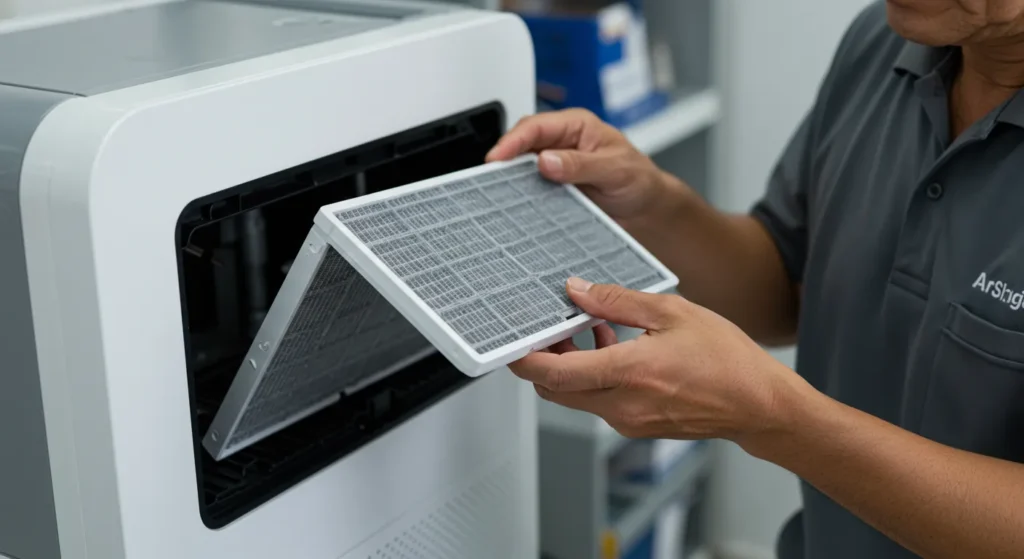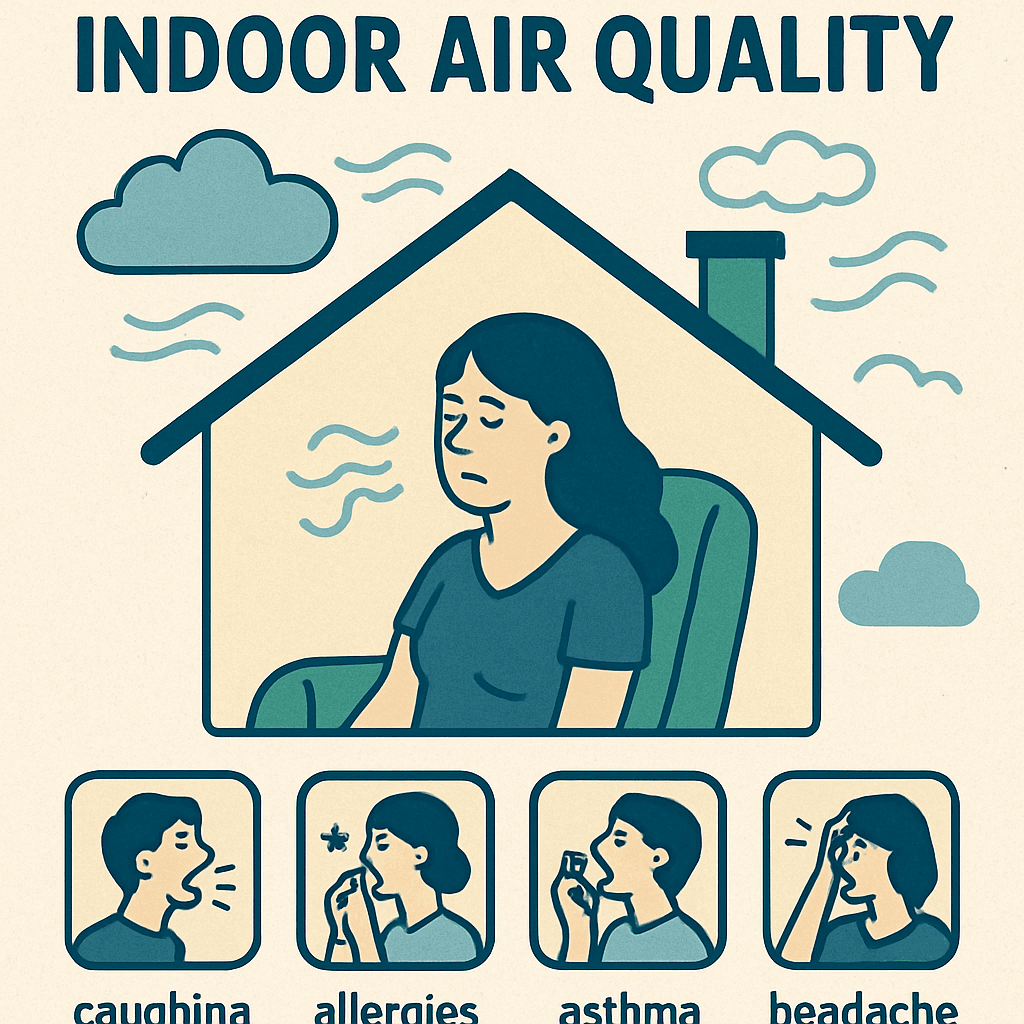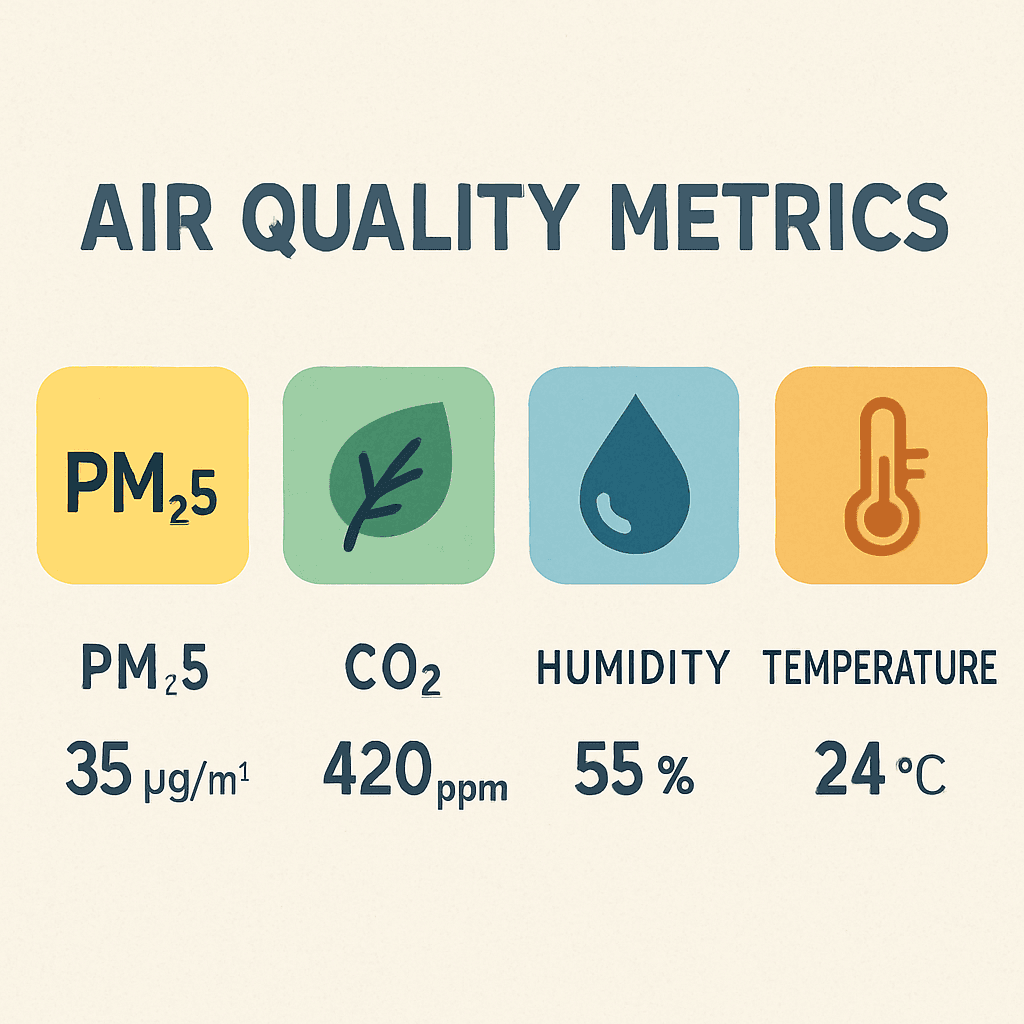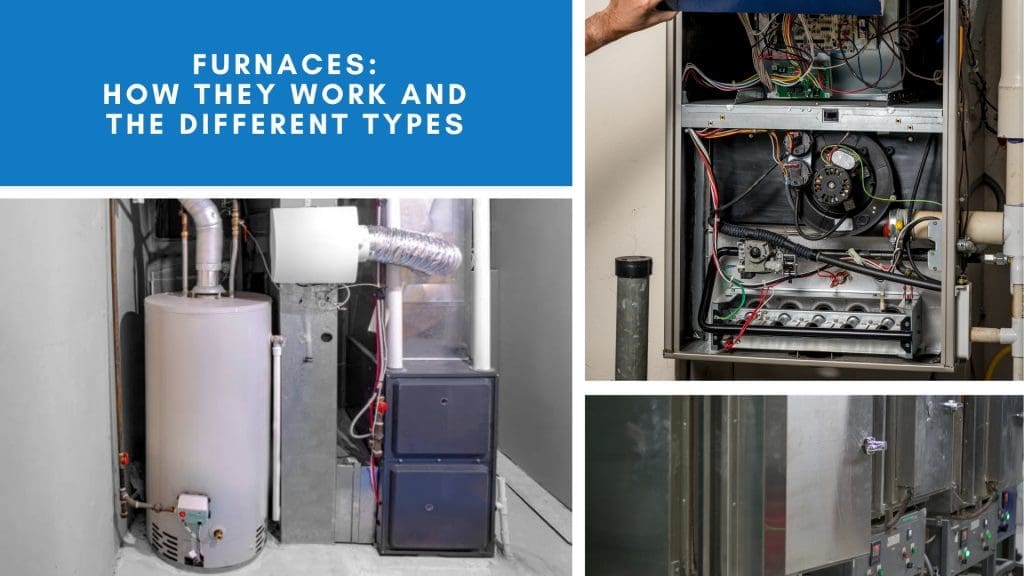Indoor air quality is crucial for a healthy home or workspace. It affects comfort, health, and productivity.
Choosing the right indoor air meter can seem daunting. With so many options, it’s hard to know where to start.
An indoor air meter helps you understand the air you breathe. It measures pollutants and provides data to improve air quality.
Whether you’re a stay-at-home parent or a small business owner, air quality matters. It impacts your family’s health and your business’s success.
Understanding air quality metrics is key. Knowing what to measure helps you choose the right tool.

Different meters offer various features. Some are portable, while others are stationary.
Consider your needs and budget when selecting a meter. Look for accuracy, ease of use, and smart features.
This guide will help you make an informed choice. Let’s explore how to choose the best indoor air meter for your needs.
Why Indoor Air Quality Matters
Indoor air quality (IAQ) is more than just a buzzword. It’s vital for maintaining a healthy environment for you and your loved ones.
Poor IAQ can lead to various health issues. These include allergies, respiratory problems, and even long-term conditions. It’s crucial to keep these concerns at bay.
Besides health, IAQ influences overall comfort and productivity. Fresh air improves focus and energy levels, especially important for those working from home.
Let’s consider why good IAQ is essential:
- Reduces allergens and irritants, improving respiratory health.
- Enhances mental clarity and productivity.
- Promotes restful sleep by maintaining comfortable air conditions.

Monitoring IAQ offers insight into potential air pollutants. It empowers you to make informed decisions about ventilation and purification. Taking control of your air quality ensures a safe and comfortable living space.
By making IAQ a priority, you foster a healthier and more inviting home or business environment. It’s a small investment with significant benefits for your quality of life.
Understanding Air Quality Metrics: What Should You Measure?
When it comes to indoor air quality, knowing what to measure can make all the difference. Understanding air quality metrics helps you assess your living or work space more effectively.
The key metrics to focus on include PM2.5, VOCs, and CO2 levels. Each plays a unique role in defining air quality.
- PM2.5: These are tiny particles that can penetrate deep into your lungs, causing health issues.
- VOCs (Volatile Organic Compounds): These chemicals can contribute to respiratory problems and discomfort.
- CO2: High levels can cause fatigue and reduce concentration.

Other factors like humidity and temperature also play a part. Maintaining optimal levels can enhance comfort and health.
Real-time monitoring of these metrics allows you to take swift action. Whether it’s adjusting ventilation or using an air purifier, the data guides your decisions.
By understanding these metrics, you’re better equipped to create a safe indoor environment. Remember, each metric provides valuable insights to ensure your air is clean and healthy.
Types of Indoor Air Meters: Which One Fits Your Needs?
Choosing the right indoor air meter depends on your specific needs. There are several types available, each designed for particular concerns.
Portable Air Quality Monitors: Ideal for those needing mobility. These devices can be easily moved between rooms or locations.
Stationary Indoor Air Quality Meters: Perfect for continuous monitoring in one spot. Suitable for homes and small businesses wanting constant data.
VOC Air Monitors: Focused on detecting volatile organic compounds. Useful in environments with potential chemical pollutants.
PM2.5 Meters: Specifically target fine particulate matter. Important in areas with dust or pollution concerns.
Hybrid Models: Combine features of multiple devices. Offer comprehensive data on various air quality metrics.
Common Types:
- Portable Monitors
- Stationary Meters
- VOC Air Monitors
- PM2.5 Devices
- Hybrid Models
Selecting the right type depends on the specifics of your environment. Consider what pollutants are prevalent and your budget.
If versatility is a priority, a hybrid model might be your best bet. For targeted monitoring, specialized meters offer precise data. Understanding these options helps you make an informed choice, ensuring the air meter fits your needs perfectly.
Key Features to Look for in an Indoor Air Meter
When selecting an indoor air meter, several features are essential to consider. These features ensure you get reliable data and a device that suits your lifestyle.
Accuracy: The primary feature is accuracy. Check for meters with a high precision rate, as this directly impacts the reliability of the readings.
Range of Metrics: Consider what pollutants the meter detects. A comprehensive model will measure PM2.5, VOCs, humidity, and temperature.
Display and Interface: A clear, easy-to-read display is crucial. Look for devices with intuitive interfaces and straightforward data presentation.
Alert Features: Some meters provide alerts when levels are unsafe. These notifications can be vital for maintaining healthy air quality.
Battery Life and Power Source: Portability depends on this. Choose models with long-lasting batteries or adaptable power sources for ongoing monitoring.
Feature Checklist:
- High Accuracy
- Comprehensive Metrics
- User-Friendly Display
- Alert System
- Reliable Power
Selecting the right features depends on your needs and environment. Remember, a device with more metrics provides a broader air quality picture. A user-friendly design ensures you can easily read and understand the data.
Knowing these key features helps you choose a tool that not only meets but exceeds your expectations. Always prioritize accuracy and ease of use for the best experience.
Accuracy and Calibration: Getting Reliable Results
Accuracy is crucial for effective air quality monitoring. An indoor air meter with poor accuracy won’t provide useful data. Accurate readings help you understand and improve your indoor environment.
Calibration plays a significant role in ensuring accuracy. Look for models that offer easy calibration procedures. Regular calibration maintains the device’s accuracy over time.
Some air meters come pre-calibrated from the manufacturer. This feature can be convenient for users who may not want to perform manual calibrations. However, it’s still important to check if recalibration options are available.
Understanding how to calibrate your device ensures ongoing accuracy. Here’s a quick checklist:
- Initial Manufacturer Calibration
- User-Friendly Calibration Procedures
- Recalibration Options Available
By focusing on accuracy and calibration, your air quality meter will consistently deliver reliable results. This, in turn, empowers you to make informed decisions about your air quality management.
Portability vs. Stationary Monitors: Pros and Cons
Choosing between portable and stationary air quality monitors depends on your specific needs. Each type offers unique benefits and potential drawbacks.
Portable monitors are ideal for on-the-go assessments. They’re lightweight, often providing a snapshot of air quality in different locations. This flexibility is beneficial for those who travel frequently or wish to monitor multiple areas.
In contrast, stationary monitors are designed for continuous, fixed-location monitoring. They typically offer more comprehensive data analysis. Here’s a quick comparison:
Portable Monitors:
- Lightweight and easy to carry.
- Best for varied location checks.
Stationary Monitors:
- For fixed location monitoring.
- Often more feature-rich.
Consider how and where you plan to use the monitor. This will guide you in making the most suitable choice for your lifestyle or business.
Connectivity, Smart Features, and Data Access
In the era of smart technology, connectivity in air quality monitors plays a crucial role. Many modern devices offer integration with smart home systems, providing seamless interaction and control.
Smart features enhance user experience and data accessibility. These features can include real-time alerts and remote monitoring via apps. Users can access air quality data from anywhere, ensuring constant awareness of their environment.
When selecting a monitor, consider how it connects to other devices. Here are key connectivity features to look for:
- Wi-Fi/Bluetooth: For easy device linking.
- App Integration: Access data on-the-go.
- Cloud Storage: Save and review past data.
Access to detailed data empowers users to make informed decisions. It’s about more than convenience; it’s about using technology to maintain a healthy indoor environment.
Ease of Use and Maintenance
Simplicity is key when choosing an indoor air meter. A user-friendly interface ensures that everyone, regardless of tech-savviness, can operate the device comfortably. Look for models that offer straightforward setup and clear instructions.
Routine maintenance keeps air quality monitors functioning well. Most models require minimal upkeep, but it’s wise to check for specific care guidelines. Proper maintenance prolongs the lifespan and accuracy of the monitor.
Consider the following ease-of-use features:
- Intuitive Controls: Easy navigation and operation.
- Clear Display: Readable data and metrics.
- Accessible Maintenance: Simple cleaning and upkeep procedures.
Understanding the maintenance requirements of your air quality monitor ensures reliable readings. A well-maintained device provides peace of mind, letting you focus on other priorities without worry.
Cost, Value, and Warranty Considerations
When selecting an indoor air meter, evaluate both cost and value. Higher-priced models often offer advanced features, but budget-friendly options can still provide essential monitoring. It’s crucial to balance cost with the features you need.
Consider the long-term benefits and savings. A slightly higher investment in a quality air monitor can lead to better health outcomes and energy efficiency. This long-term perspective often justifies the initial expense.
Don’t overlook the warranty as part of your purchase decision. A strong warranty is a sign of reliability and manufacturer confidence. When evaluating options, pay attention to:
- Coverage Duration: Length of the warranty period.
- Scope: What parts and issues are covered?
- Customer Support: Ease of accessing warranty services.
Choosing an air quality monitor that balances cost, value, and warranty can help ensure a satisfying and worry-free experience.
Commercial vs. Home Air Quality Monitors
Commercial and home air quality monitors serve different needs and scales. Understanding their distinctions helps in choosing the right one. Home models are typically simpler and focus on essential pollutants. They suit residential environments.
In contrast, commercial monitors offer robust features. They measure a wider range of pollutants with higher precision. These tools are ideal for businesses needing comprehensive air quality assessments.
When deciding between commercial and home monitors, consider:
- Scope of Measurement: What pollutants are monitored?
- Precision and Range: Accuracy and area of coverage.
- Data Output and Analysis: Complexity of data offered.
Choosing based on your specific environment ensures effective air quality management tailored to your needs.
How to Interpret Air Quality Data and Take Action
Interpreting air quality data is crucial for making informed decisions. Start by understanding the key metrics displayed on your meter. Common indicators include PM2.5 levels, VOC concentrations, and CO2 readings.
Each of these elements affects health and comfort differently. High PM2.5 levels, for instance, may indicate harmful particulates. Elevated VOCs can suggest the presence of chemical pollutants. Recognizing these patterns is the first step in taking action.
Once data is interpreted, take action as needed:
- Increase Ventilation: Open windows or use exhaust fans.
- Use Air Purifiers: Consider devices with HEPA filters.
- Identify and Eliminate Sources: Remove or reduce pollutant sources.
Interpreting air quality data empowers you to create a healthier environment at home or work. With the right actions, you can effectively manage indoor air quality issues.
Integrating Air Quality Monitoring with Your HVAC System
Integrating air quality monitoring with your HVAC system can greatly improve indoor air health. It allows for real-time adjustments to maintain optimal conditions. Linking these systems can create a proactive approach to air quality management.
Smart HVAC systems can automatically adjust based on detected pollutants. This means increased ventilation when VOC levels rise or when PM2.5 levels spike. Having this synergy ensures a consistent and healthy indoor environment.
To enhance your system, consider these steps:
- Upgrade to Smart Thermostats: They often include air quality sensors.
- Ensure Proper Maintenance: Regularly service your HVAC system.
- Consult Professionals: Seek advice for optimal integration.
With a well-integrated system, you can enjoy cleaner air with minimal effort. This not only protects health but also boosts comfort and productivity.
When to Call a Professional for Indoor Air Quality Services
Sometimes, professional intervention is necessary to ensure optimal indoor air quality. It’s important to recognize when a DIY approach isn’t enough.
If you notice persistent musty odors or consistent dust buildup, it might be time to consult a professional. They can diagnose and resolve underlying issues that basic meters might miss.
You should consider reaching out to a professional in these situations:
- Allergy Symptoms Persist: Despite regular cleaning and monitoring.
- Frequent Respiratory Issues: Affecting family or employees.
- Unexplained Mold or Mildew: Continually reoccurs.
Professionals have the tools and expertise to provide comprehensive solutions. Their guidance can lead to a significant improvement in air quality, safeguarding health and comfort. Don’t hesitate to call for assistance when needed.
Conclusion: Making the Right Choice for Your Home or Business
Selecting the right indoor air meter is vital for maintaining a healthy environment. A thoughtful choice ensures reliable data and peace of mind.
Consider your specific needs and environment. Whether for a home or business, prioritize features that align with your goals and budget.
Remember, regular monitoring is key. It empowers you to make informed decisions, improving your quality of life and work. With the right indoor air meter, you can confidently foster a healthier space, ensuring the well-being of everyone within it.


